Hello Collector friends,
alomst time for another cuff title to speak about. It is connected with the beginning of the Fallschirmtruppe of the Luftwaffe. So lets go into it and I hope you like it.

Shortly after 31.01.1933, and the accession of Adolf Hitler to the position of Reichskanzler, Hermann Göring, at that time amongst other things also the Prussian Minister of the Interior, ordered the creation of a special Police unit, a unit which would stand loyal to the Führer and break any resistance to the young National Socialist movement. On 23.02.1933 Major of the Prussian Police Walther Wecke was entrusted with the command of this unit. Two days later Wecke reported the creation of his „Polizei-Abteilung zbV. “ with a strength of 14 Officers and 400 Men. The „Abteilung“ was initially based in the district of Kreuzberg (Berlin), in the former barracks of the Queen Augusta Grenadier Guards Regiment 4 and then in the barracks of the former Prussian Queen Elizabeth Grenadier Guards Regiment 3 in Charlottenburg.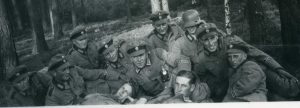
Already on 02.03.1933, the „Abteilung“, more commonly called „Polizei-Abteilung Wecke“ , was first used against political opponents in Berlin. It was mainly used to smash the KPD meetings and other workers‘ organizations, with the aim of eliminating the political opposition.
On 07.17.1933 the unit was renamed „Landespolizeigruppe zbV. Wecke„, and thus was created the first country-wide „Landespolizeigruppe“ in Germany. On 17.09.1933 the „Gruppe“ was endowed by Hermann Göring with its own Standard, along with the words: „It is my intention to convert the Prussian police into a powerful weapon, similar to the Reichswehr, which I will hand over to the Führer, whenever we will fight our external enemies“.
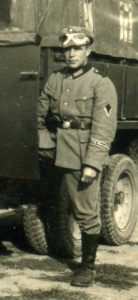
On 22.12.1933 the Gruppe was renamed again, this time as „Landespolizeigruppe General Göring“. Lieutenant Colonel Friedrich-Wilhelm Jacoby, formerly adjutant of Göring in his capacity as Prussian Minister of the Interior and Reich Aviation Minister, took over command of the group on 06.06.1934. After the introduction of conscription on 16.03.1935, the „Polizeigruppe“ received the more military sounding title „Regiment General Göring“ .
In September 1935, Jacoby received from Göring the order to transfer the regiment to the Luftwaffe on the date 01.10.1935. Volunteers of the regiment would form the basis of a battalion of the future German paratroop units. At that time the regiment contained the following units:
Regimentsstabs
Musikkorps
I (Jäger) Bataillon /Regiment General Göring (späteres Fallschirmjäger-Bataillon)
II (Jäger) Bataillon /Regiment General Göring
13. Kradschützen-Kompanie/Regiment General Göring
15. Pionier-Kompanie/ Regiment General Göring
Reiterzug/ Regiment General Göring
Nachrichtenzug/ Regiment General Göring
Added later were:
III. (leichte) Flak-Abteilung/ Regiment General Göring (Autumn 1935)
14. Wach-Kompanie / Regiment General Göring (11.07.1936)
16. Wach-Kompanie / Regiment General Göring (01.04.1937)
In January 1936, one bataillon under Major Bruno Bräuer and the 15th company, moved to the military training grounds at Döberitz, where they received parachute training, while the rest of the regiment moved to Altengrabow to reorganize. On 21.08.1936 Major Walther von Axthelm took command.
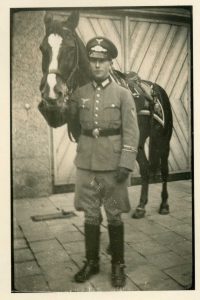
Later, during the 2nd World War the Hermann Göring units would be seen as a sort of elite, not only within the Air Force, but also within the entire Wehrmacht. This is partly due to the fact that the personnel, at least in the early years, were all volunteers. There were also high recruitment standards and physical training. However, the Hermann Göring units also offered the best opportunities for advancement. Also playing their part were factors such as accommodation in the new barracks in Reinickendorf, the most modern of all throughout the whole German Reich, to gain national and international recognition by the outwardly visible insignia of the white collar tabs and the cuff title „General Goering“, the possibility of being a bodyguard to Goering, and the comradeship within the regiment all provided enough reasons to wish to serve within this regiment.
By 01.10.1937 the regiment consisted of the following units:
Regimentsstabs
Nachrichtenzug
Musikkorps
I (schwere) Flak-Abteilung/Regiment General Göring (from II. (Jäger) Bataillon with:
Stab, Stabsbatterie, 1.-3. Batterie (8,8-cm) and 4. Batterie (3,7-cm)
II (leichte) Flak-Abteilung/Regiment General Göring (from III. (leichte) Flak-Abteilung with:
Stab, Stabsbatterie, 5.-7. Batterie (2-cm)
III. Wach-Bataillon/Regiment General Göring (from Reiterzug, 13. Kradschützen-Kompanie, 14. and 16. Wach-Kompanie with:
Stab, Nachrichtenzug, Reiterzug, 8. Kradschützen-Kompanie with Panzer-Spähzug (disbanded 01.11.1938), 9. and 10. Wach-Kompanie, from 01.04.1938 11. Wach-Kompanie
IV Fallschirmschützen-Bataillon/Regiment General Göring (from I./ (Jäger) and 15. Kp./Regiment General Göring) with:
Stab, Nachrichtenzug, 11.-13. Fallschirmschützen-Kompanie, 14. Fallschirmschützen-MG-Kompanie, 15. Fallschirm-Pionier-Kompanie
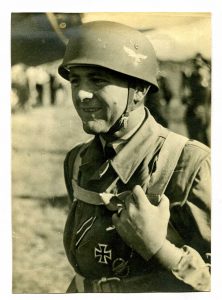
At the end of March 1938, the IV. Bataillon and the 15th company left the regiment and formed the I./Fallschirm-Regiment 1. At about the same time, the regiment took part in the annexation of Austria and on 15.03.1938 paraded in front of Hitler. In October 1938, it participated in the invasion of the Sudetenland and on 15.03.1939 took part in the parade in Prague.
Due to the loss of parachute units, the breakdown of the regiment from 01.11.1938 was as follows :
Regimentsstab/Regiment General Göring with Musikkorps and Stabsbatterie
I (schwere) Flak-Abteilung/Regiment General Göring
II (leichte) Flak-Abteilung/Regiment General Göring
III. Scheinwerfer-Abteilung/Regiment General Göring
IV (leichte) Flak-Abteilung/Regiment General Göring
Wach-Bataillon/Regiment General Göring with Reiterzug and three Wach-Kompanien
Luftlande-Bataillon/Regiment General Göring (since Summer 1938 as Ausbildungseinheit, up to August 1939)
In the course of the Polish crisis, the regiment was mobilized on 15.8.1939 which resulted in the following restructuring of the Regiment:
Reiterzug became Reiterschwadron/Regiment General Göring
Formed from:
Reserve-Scheinwerfer-Abteilung/Regiment General Göring
Ersatz-Abteilung//Regiment General Göring
1 (schwere) Eisenbahn-Flak-Batterie
1 (leichte) Flak-Batterie as support unit for the Oberbefehlshaber der Luftwaffe Göring, the Foreign Minister Joachim von Ribbentrop and as air defence for the Führer Hauptquartier

During the Polish campaign the majority of the regiment remained in the Berlin area to provide anti-aircraft protection and to protect the headquarters of Goering. Amongst other things in October 1939, a company participated in the victory parade in Warsaw.
With the end of the Polish campaign, at the end of October 1st., the III. and IV. Abteilung of the regiment moved in secret to the western front, where they were subordinated to anti-aircraft regiments. Only the II. Abteilung remained in the Berlin area where it would continue to provide part of the air raid protection of greater Berlin.
In early April 1940 a battalion, also known as “Einheit Kluge”, was formed from a Wach-Kompanie, a 2-cm-Flak-Battery (sf) and a newly established Kradschützen-Kompanie of the regiment all under the command of Major Kluge. This unit took part in operation „Weserübung„, the occupation of Denmark and Norway. In Norway, it participated in the fighting between Oslo and Trondheim. The rest of the regiment secured the Rhineland on the Dutch border.
As from 10.05.1940, large parts of the regiment took part in the battles which followed in the West, capturing Brussels. These units were in this case used as „Kampfgruppen“, and the anti-aircraft units achieved very good results in the anti-tank role. After the armistice, the regiment was initially stationed for several weeks on the channel coast and then used for air defense in the Paris area. Towards the end of 1940, the regiment moved back to Germany and was once again part of the air defense of Berlin.
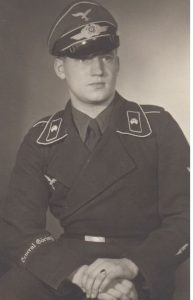
Before the beginning of the Balkan campaign the regiment moved to Romania, there to protect the major oil fields from enemy air raids. Then it moved in the early summer of 1941 to the River Bug at Sokal and remained there in readiness for the eastern campaign. After the fighting began, it distinguished itself in the fighting around Dubno and Kiev. By October 1941 the regiment had destroyed:
161 Aircraft
324 Tanks
45 Bunkers
167 Artillerie Guns
530 Machine Gun Positions
In the process more than 11,000 prisoners were taken. Up to this point four members of the regiment received the Knight`s cross and four members the german cross in Gold .
At the end of 1941, the regiment moved back to Germany to refresh, while a newly formed „Schützen-Bataillon“ remained in the east and took part in the defensive fighting there until April 1942.
In March 1942, Göring ordered the extension of the regiment to brigade level, and on 15.07.1942 the regiment was renamed as „Brigade Hermann Göring“.
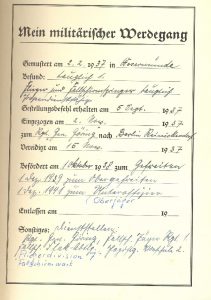
Description Cuff Title L.P.G. General Göring
The cuffband which consisted of dark green, Police uniform like badge-cloth was 3.2 cm wide and was in executed in “Frakturschrift” as follows:
- For Officers the cuff title was hand embroidered in Aluminium thread and featured additional embroidery in the form of a 3mm wide Aluminium thread (Soutache) braid strip on the upper and lower edges of the cuff title.
- Although similar in material and colour the version for enlisted ranks was additionally identified by having no edge strip.










Method of Wear:
The cuff title was worn on the “Tuchrock” just above the turned back cuff of the right sleeve. When worn by a soldier holding an appointment to the position of “Hauptfeldwebel” , it was attached just above the sleeve rings indicating this status. Officers also wore the cuff title on the “Fliegerbluse” and the white summer tunic. It is evidenced by numerous photographs however, that the wearing of this cuff title was probably complied with less and less over the course of the war.
I like to thank Mr. Helmut Weitze, Hamburg and his Staff for helping me out with pictures of LPG cuff titles and also lot of collector friends who are all listed in my cuff title book: Göring units and Para units WW2
Subscribe for more 😉
Best
Sascha